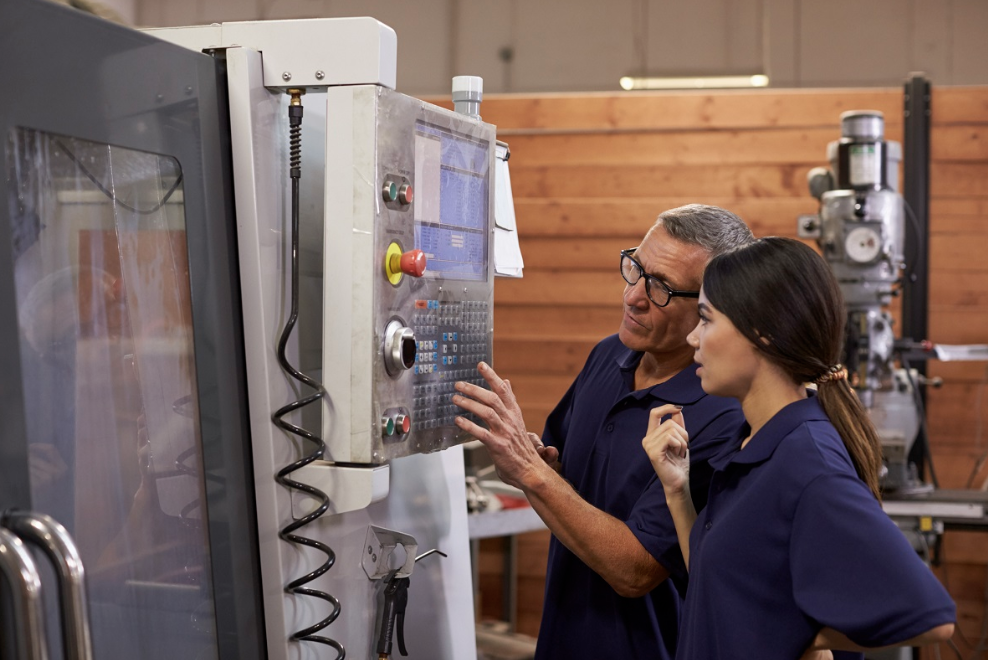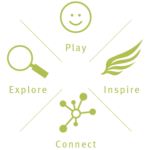
Intergenerational learning is a top priority
Intergenerational learning is needed more now than ever before. Labor markets are struggling to meet rising human resource demands and simultaneously remain innovative. In a blog titled, Leveraging Europe’s Ageing Workforce, the author reports on how a declining pool of potential EU workers in a growing job market is resulting in the frenetic search for qualified and engaged young workers. In the US, the economic situation does not fair better.
A perfect storm is brewing. The combination of a decreasing labor force participation rate, baby boomers retiring, an expanding wage gap between high school and college graduates, and the skyrocketing costs of higher education are well documented. This harsh reality is set against the backdrop of a spiraling national debt that has surpassed $21,000,000,000,000. Let us not forget the ominous and bitter consequences of the 2008 global financial crisis. A corrective course of action is needed to avert a similar or worse fate.
What can we learn from older generations?
Companies need older workers! That is potentially good news for older workers seeking employment, as long as employers see the value in hiring them. By 2024, one in four U.S. workers will be 55 or older, according to the U.S. Department of Labor. How should older workers be regarded in a digital age? How can the labor market incorporate their experience and wisdom? Older employees are typically seen as expensive and replaceable by younger and less expensive counterparts. But is this entirely true?
Older employees have established networks. They have experience overcoming organizational challenges and achieving lofty goals. Their know-how and connections optimally position them to offer guidance and support. Their trained soft skills can help younger colleagues refine theirs. By sharing their stories and listening to younger generations, senior employees are a source of inspiration. Solely viewing them as a financial burden is not only short-sighted but also detrimental to an organization’s future in today’s market. Regarding them as a vital asset inspires new purpose and fresh meaning in their work-life, boosting their morale and productivity.
What can we learn from younger generations?
“Age shows wisdom, but wisdom shows no age” – Unknown author
As digital natives, young employees today may lack work experience and social competencies, but their ability to navigate in a digital world is unprecedented. In my parenting book What You Can Learn from Your Teenager: Lessons in Parenting and Personal Growth, I outline the EPIC Model, a learning framework embodied by those most adept at learning: young people. The Model consists of four components: exploration, play, inspiration, and connection. Using this framework optimizes intergenerational learning.
Regardless of age, we all have the capacity to learn. Young people can help older ones reignite the innate ability to explore, play, inspire, and connect. Subscribing to such a philosophy allows one to remain open to new possibilities. Organizations adopting such a philosophy remain viable and innovative. Creating an open learning culture improves both employee and organizational performance.
Generational labels impede intergenerational learning
Once GenX, GenY, and GenZ are mentioned, a debate ensues to determine the beginning and end years of each. As if a birth year reveals everything you need to know about a person. A heated discussion then follows to agree upon several descriptors applicable to hundreds of millions of people. Anyone who can memorize some random dates and a few adjectives becomes an immediate generation expert. If it were only so simple!
Labeling people usually leads to stereotypes. Stereotypes usually lead to some form of discrimination. Here are some warning signs of age discrimination. How does this domino effect ameliorate an aging and shrinking workforce? It doesn’t. It does the opposite. It perpetuates the current situation. What happens when organizations place more emphasis on reciprocal intergenerational learning? How would intergenerational learning impact workplace culture, productivity, and creativity in your organization?
Intergenerational learning in action
Intergenerational learning requires commitment and time. Who has time for that? Time taken now to create new possibilities, improve collaboration, and ignite productivity saves time in the long-run. Processes, where information and conversations that matter most can be discussed from all perspectives, are vital. When all stakeholders participate then all members can take ownership and responsibility for the outcome.
For technical learning, apprenticeship programs and continuous training keep all stakeholders up-to-date with current trends. Mentoring and reverse mentoring also help young employees with onboarding. Storytelling or various circle methods can be extremely helpful in creating space for reciprocal know-how sharing and open feedback. Excursions and celebrations build social bonds and create a sense of achievement and belonging. A neutral facilitator may also be preferable when starting out or dealing with more serious issues. There are numerous ways organizations can fully embrace the benefits of intergenerational learning other than simply creating multigenerational teams and hoping for the best.
About the author
Jean-Pierre is a Process Facilitator, Human Systems Expert, and Youth Specialist. He is the author of “What You Can Learn from Your Teenager: Lessons in Parenting and Personal Growth”. Jean-Pierre accompanies organizations in fully integrating their human resource potential by facilitating group processes that foster authenticity, intention, and collective wisdom. All stakeholders benefit in a culture that supports exploration, play, inspiration, and connection.
